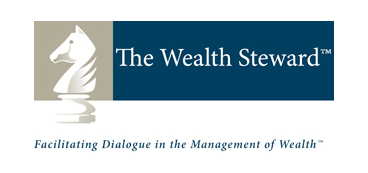By Dan Hallett on June 29, 2015
 Much has been written about newer investment advisory firms that dispense advice through user-friendly websites, called Robo-Advisors. This new breed of advisory firms offers many potential benefits but also faces many headwinds.
Much has been written about newer investment advisory firms that dispense advice through user-friendly websites, called Robo-Advisors. This new breed of advisory firms offers many potential benefits but also faces many headwinds.
Potential Benefits of Robo-Advisors
Dealing with an advisor face-to-face can sometimes be intimidating, which can act as a barrier to obtaining advice. Leveraging the power of user-friendly technology removes that barrier for the tech-savvy while creating a scalable platform for these firms. This keeps costs low; a key benefit of Robo-Advisors.
This is a good example of a market naturally establishing a pricing floor for basic investment advice – i.e. 35 basis points (0.35%) per year of the value of client portfolios plus tax and product fees. Some advisors will be challenged and pushed out of the business. And unlike the vast majority of those who call themselves “financial advisors” or something similar, every Rob-Advisory firm I’ve looked at is a licensed portfolio manager – i.e. a legal fiduciary.
Drawbacks of Robo-Advisors
The positive view of Robo-Advisors thus far has largely been driven by its low cost – piggybacking on the popularity of low cost index funds and exchange traded funds (ETFs). Yet none that I’m aware of actually structures portfolios based on indexing’s underlying theory. The basic idea of indexing is to obtain the broadest exposure possible at the lowest available cost.
A two-ETF portfolio is a prime example of indexing; one covering all of the world’s equities and another the world’s bonds. But Robo-Advisors tend to overlay their own active management by using ETFs that offer both passive and active exposure to financial markets – or emphasizing narrow slices of financial markets. This is quite a departure from indexing’s low-cost simplicity. By failing to take full advantage of indexing’s appeal, Robo-Advisors are missing an opportunity to maximize their cost advantage over incumbents.
A simple indexing portfolio costs about 20 basis points or 0.2% annually. Assuming a Robo-Advisory fee of 0.35% per year, the total investment management cost would come to a grand total of 60 basis points annually including HST. Instead, every firm I’ve seen is either buying many different slices of financial markets or adding lots of actively managed ETFs – significantly pushing up total costs.
Robo-Advisors resist simpler structures due to the challenge of convincing investors to pay ongoing fees to buy, hold and rebalance two or three ETFs. It’s an easier sell to propose a more complex structure that looks more difficult to replicate and maintain. And yet simpler structures offer good value – i.e. low maintenance, low cost and – most importantly – in the embedded discipline that so few investors exhibit on their own.
Accordingly, Robo-designed portfolios are more costly and less efficient than they could be. And just about every one I’m aware of employs sub-optimal rebalancing. Layer on some of the conflicts facing a few Canadian Robo-Advisors and it becomes apparent how vulnerable they all are to a looming competitive threat.
Competition for Robo-Advisors
In the U.S., discount broker Charles Schwab offers its own Robo-Advisory platform, using Schwab’s own competitively-priced ETFs. They make money on the ETFs but charge nothing for advice. There’s no reason why BMO couldn’t do the same.
BMO already offers an automated advisory service, though it’s expensive and not focused on ETFs. But they have the platform. And they boast the largest ETF family among Canadian banks, which makes them ideally positioned to be a mega Robo-competitor.
RBC – which has a growing ETF family – can do the same. So can TD or CIBC; each of which boasts some of Canada’s oldest and cheapest index mutual funds.
All Robo-Advisory firms are surely well aware of this very real threat.
The Future for Robo-Advisors
Getting advice remotely isn’t a fit for everyone. In my view, those with larger and more complex needs and portfolios will always gravitate to face-to-face advisors offering a deeper and more interactive discovery process to feed into investment plans that quantify goals. This leads to a more customized solution to push clients toward their goals.
My view is biased, of course. But I see the continuing growth of HighView and its peers as validation of this view. Still I expect Robo-Advisors to survive and thrive as a stand-alone segment. As has happened in the U.S., they may also evolve as technology platform providers for other advisors.
The second phase of regulators’ Client Relationship Model (CRM2) will be implemented in a year. Ontario continues to explore the idea of regulating financial planners. And securities regulators are still discussing the notion of applying a fiduciary or ‘best interest’ standard to financial advisors. It’s the more mainstream retail advisors that are most at risk because of Robo-Advisors’ focus and the expected impact of CRM2.
Regardless of the direction of those initiatives, the idea of dispensing investment advice online or through a mobile app likely has staying power. The question is whether they’ll survive as independents or whether this is just another new segment that the banks will eventually own.
>> HighView Financial Group is an investment counselling firm for affluent families and foundations. We build portfolios based on the unique goals of each client. Schedule a complimentary discovery session to see if we’re the right investment stewardship counsellors for you.
You may also be interested in:
- Debunking the Investment Industry: Relative Benchmarking
- Focus on meeting your goals not on investment debates
- Some Advisors Behaving Badly with CRM2 on the Horizon
- Piling into U.S. stocks? Don’t Expect the Past Decade to Repeat - January 15, 2025
- The S&P 500’s Three Surprising Traits - November 6, 2024
- Savvy DIY Investors Must Plan For Succession - September 4, 2024



